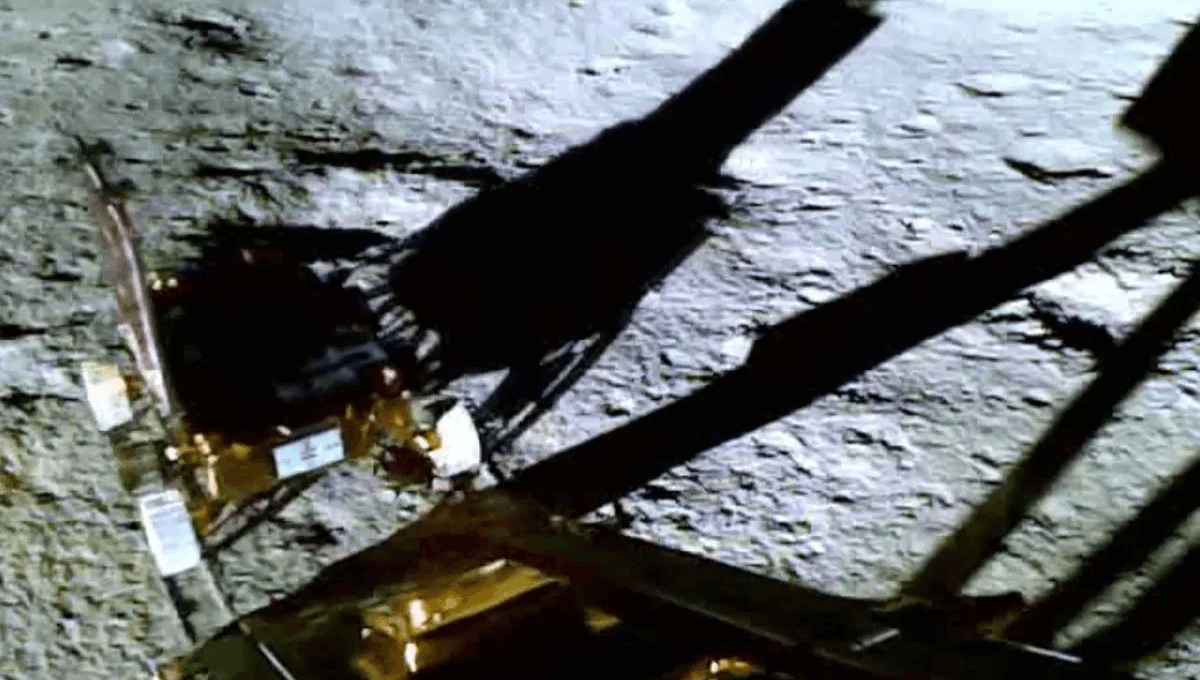
The Sun is setting on Pragyan, the history-making lunar rover that, along with the Vikram lander, was sent by the Indian Space Research Organisation (ISRO) to the surface of the Moon. The indomitable duo have completed their primary mission, delivering intriguing insights, and now, it is time to sleep. But, fingers crossed, this is just a snooze and Pragyan will wake up in two weeks’ time ready to go again.
“The rover completes its assignments. It is now safely parked and set into sleep mode,” ISRO said in a statement. “Currently, the battery is fully charged. The solar panel is oriented to receive the light at the next sunrise expected on September 22, 2023. The receiver is kept on. Hoping for a successful awakening for another set of assignments!”
This was always part of the plan as Pragyan’s science mission was always going to be one lunar daytime, or 14 Earth days. A lunar day is about 29.5 Earth day, so there is just over 14 days of sunshine and just over 14 days of night. During the night, the temperature drops to -130°C (-208°F), which can damage instruments. In many missions, power is used to keep the system warm enough to survive. But without sunlight, a rover uses power stored in batteries, and it might run the risk of running out before it has a chance to charge up again.
However, ISRO has prepared to give Pragyan a fighting chance. The ISRO team charged the batteries of Pragyan fully and oriented its solar panel to get the first sunlight on September 22. Its two experiments have been switched off and all the data has been transmitted back to Earth. Everything that could have been done to guarantee a non-eternal sleep has been done. Now we just have to wait and see.
“Hoping for a successful awakening for another set of assignments! Else, it will forever stay there as India’s lunar ambassador,” ISRO wrote on X (formerly Twitter) over the weekend.
The space agency also confirmed the Vikram lander has been set to go into sleep mode. But just before that, Vikram did a bunny hop. It flew up by 40 centimeters (15.8 inches) and then landed safely about 40 centimeters away. Instruments were safely stowed and then redeployed. Measurements were taken at the new location, before sending all the data back to Earth.
“Vikram Lander is set into sleep mode around 08:00 Hrs. IST today. Prior to that, in-situ experiments by ChaSTE, RAMBHA-LP, and ILSA payloads are performed at the new location. The data collected is received at the Earth,” ISRO confirmed in a tweet.
“Payloads are now switched off. Lander receivers are kept ON. Vikram will fall asleep next to Pragyan once the solar power is depleted and the battery is drained. Hoping for their awakening, around September 22, 2023.”
India’s first soft-landing on the Moon has been a resounding success. They were the first to safely reach the region around the South Pole of the Moon, a place of great interest to space agencies. Hopefully, both the lander and rover will wake up again and move on to an extended mission, providing even more scientific discoveries.
Source Link: India’s Moon Rover To Face Its Next Big Challenge – Surviving The Lunar Night